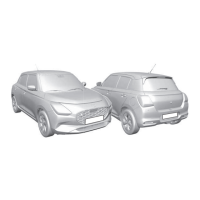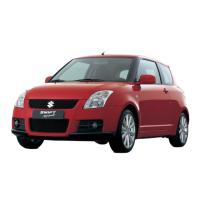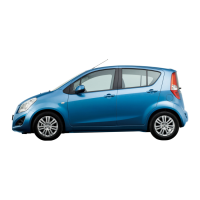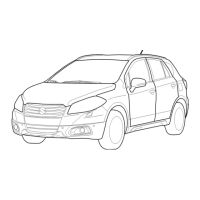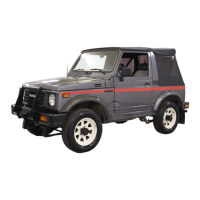3-11
OPERATING YOUR VEHICLE
52RM0-01E
For automatic transaxle or CVT vehicles,
always set the parking brake before mov-
ing the gearshift lever to “P” (PARK) posi-
tion. If you park on an incline and shift into
“P” before setting the parking brake, the
weight of the vehicle may make it difficult
to shift out of “P” when you are ready to
drive the vehicle.
When preparing to drive the vehicle, move
the gearshift lever out of “P” position
before releasing the parking brake.
Parking brake reminder buzzer
A buzzer sounds intermittently to remind
you to release the parking brake if you
start the vehicle without fully releasing the
parking brake. Check that the parking
brake is fully released and the brake sys-
tem warning light turns off.
WARNING
• Never drive your vehicle with the
parking brake on: rear brake effec-
tiveness can be reduced from over-
heating, brake life may be
shortened, or permanent brake
damage may result.
• If the parking brake does not hold
the vehicle securely or does not
fully release, have your vehicle
inspected immediately by an autho-
rized SUZUKI dealer.
WARNING
Always set the parking brake fully
before leaving your vehicle or it may
move, causing injury or damage.
When parking, make sure the gear-
shift lever for manual transaxle vehi-
cles is in 1st gear or “R” (Reverse)
and the gearshift lever for automatic
transaxle or CVT vehicles is in “P”
(Park). Remember, even though the
transaxle is in gear or in Park, you
must set the parking brake fully.
WARNING
When parking the vehicle in
extremely cold weather, the following
procedure should be used:
1) Set the parking brake.
2) Manual transaxle – turn off the
engine, then shift into reverse or
first gear.
Automatic transaxle or CVT – shift
into “P” (Park) and turn off the
engine.
3) Get out of the vehicle and put
chocks under the wheels.
4) Release the parking brake.
When you return to your vehicle,
first set the parking brake, and
then remove the wheel chocks.
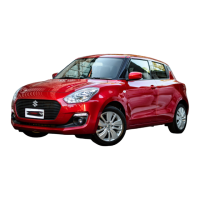
